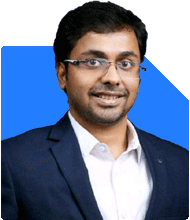Anil Rego | Answer |Ask -Follow
Financial Planner - Answered on Jul 13, 2021
He’s an expert in income tax and wealth management.
He has completed his CFA/MBA from the ICFAI Business School.... more

Thank you for all the advice in your column which I find very interesting. I have recently redeemed some mutual fund equity investments that fall into two categories. The first set are those I held for nearly 9 years and the second set is recent vintage as its average holding age is under 4 years.
1. What is the capital gains tax that I have to pay and how is it computed?
2. Is the exemption amount of Rs 2 lakhs available for capital gains also?
3. How to pay the CG tax amount and when is it due for payment?
Many thanks for your advice.
Short-term capital gains on redeeming your equity fund units within a holding period of one year are taxed at a flat rate of 15%, irrespective of your income tax bracket. Those funds exceeding one year holding period is treated as a long-term capital gain. The LTCG are exempted from tax up to Rs. 1,00,000 and any LTCG exceeding this limit shall attract a LTCG tax of 10%, and there is no indexation.
3. Paying capital gains is same as paying regular income tax. You have to go to the Income Tax India website and pay tax using challan ITNS 280.
You may like to see similar questions and answers below
Tejas Chokshi | Answer |Ask -Follow
Tax Expert - Answered on Apr 25, 2023
Samkit Maniar | Answer |Ask -Follow
Tax Expert - Answered on Mar 12, 2024
Ramalingam Kalirajan |10881 Answers |Ask -Follow
Mutual Funds, Financial Planning Expert - Answered on Jul 24, 2024
Mayank Chandel |2575 Answers |Ask -Follow
IIT-JEE, NEET-UG, SAT, CLAT, CA, CS Exam Expert - Answered on Dec 13, 2025
Radheshyam Zanwar |6742 Answers |Ask -Follow
MHT-CET, IIT-JEE, NEET-UG Expert - Answered on Dec 13, 2025
Mayank Chandel |2575 Answers |Ask -Follow
IIT-JEE, NEET-UG, SAT, CLAT, CA, CS Exam Expert - Answered on Dec 13, 2025
Mayank Chandel |2575 Answers |Ask -Follow
IIT-JEE, NEET-UG, SAT, CLAT, CA, CS Exam Expert - Answered on Dec 13, 2025
Kanchan Rai |646 Answers |Ask -Follow
Relationships Expert, Mind Coach - Answered on Dec 12, 2025
Ravi Mittal |677 Answers |Ask -Follow
Dating, Relationships Expert - Answered on Dec 12, 2025
Ramalingam Kalirajan |10881 Answers |Ask -Follow
Mutual Funds, Financial Planning Expert - Answered on Dec 12, 2025
Ramalingam Kalirajan |10881 Answers |Ask -Follow
Mutual Funds, Financial Planning Expert - Answered on Dec 12, 2025
Reetika Sharma |423 Answers |Ask -Follow
Financial Planner, MF and Insurance Expert - Answered on Dec 12, 2025
Reetika Sharma |423 Answers |Ask -Follow
Financial Planner, MF and Insurance Expert - Answered on Dec 12, 2025





























